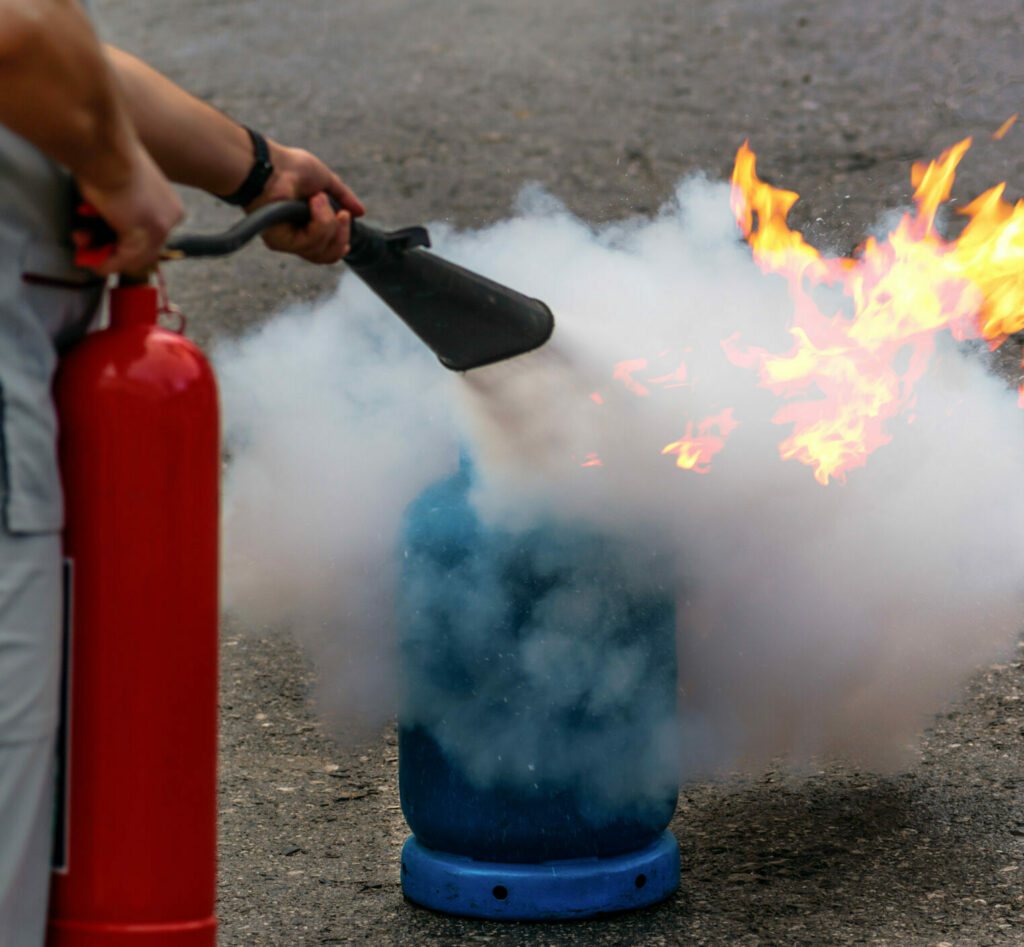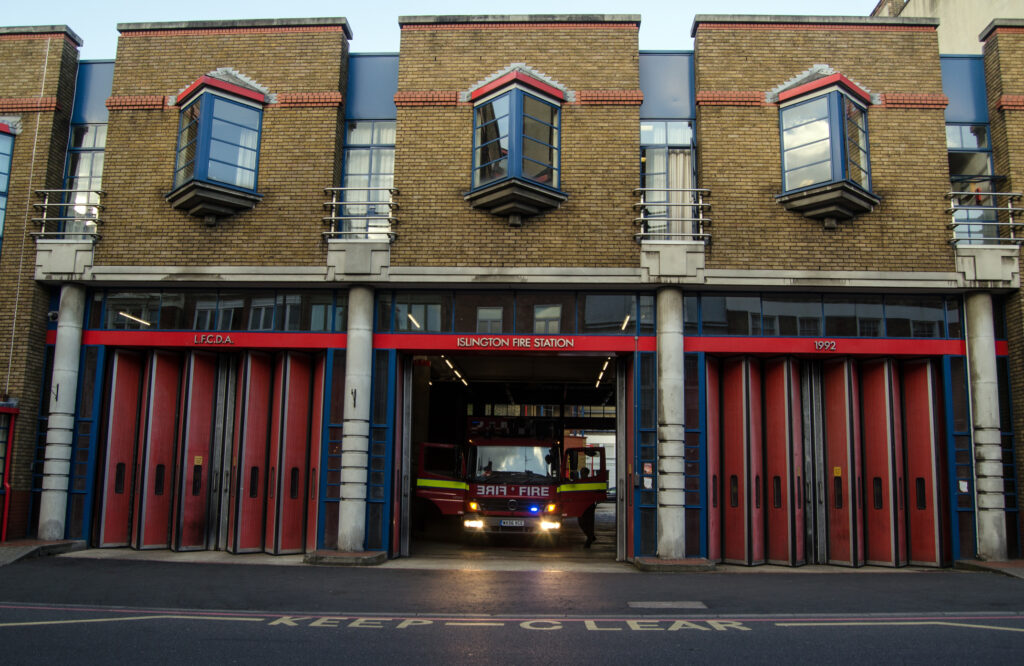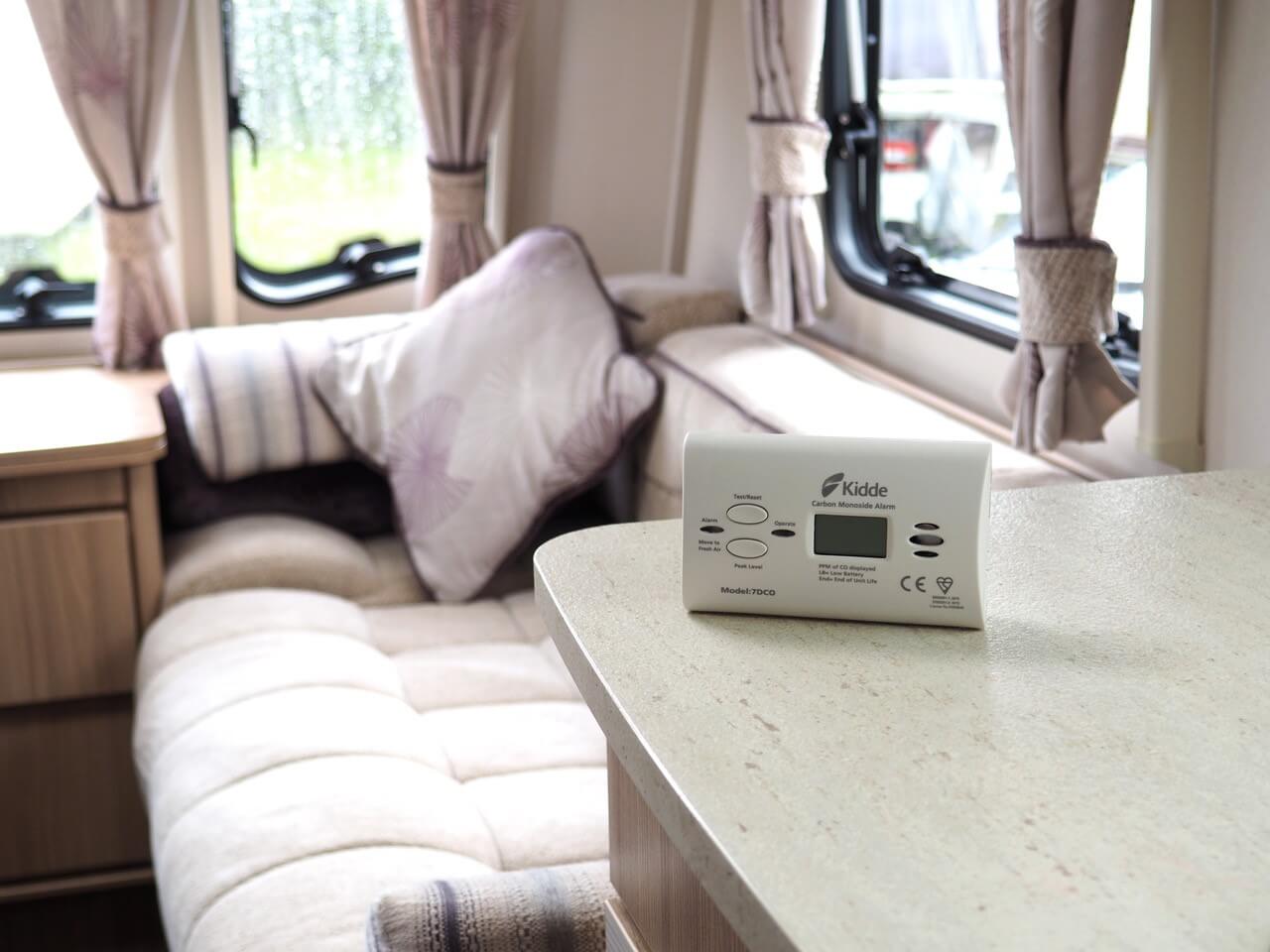Tuesday 30th September 2025
When confronted with a fire emergency, knowing how to operate a fire extinguisher can mean the difference between escaping from a burning building and not. The four-step PASS (Pull, Aim, Squeeze, Sweep) method provides a structured approach that maximises your chances of success, minimising both personal risk and property damage.
These steps represent decades of fire safety expertise condensed into a memorable sequence. Each action builds upon the previous one, creating a systematic approach that works across different types of fires and extinguisher technologies.
How Do You Pull the Safety Pin Correctly?
The first step involves removing the safety pin that prevents accidental discharge. This pin sits at the top of the extinguisher, typically secured with a plastic tie or metal clip. Grasp the pin firmly and pull it straight out, avoiding any twisting motion that could damage the mechanism.
Some extinguishers feature a tamper seal that breaks when you remove the pin. This seal serves as an indicator that the unit has been activated, helping with maintenance tracking.
Modern fire extinguishers incorporate enhanced safety features that prevent accidental activation. The pin removal requires deliberate force, ensuring the unit won’t discharge during normal handling or transport.

What Is the Proper Aiming Technique?
Step two focuses on targeting the base of the flames rather than the visible fire itself. This technique attacks the fuel source, cutting off the fire’s supply and preventing re-ignition. Position yourself at the recommended distance, typically between 6 and 8 feet from the fire, maintaining a clear escape route behind you.
Your stance should be stable and balanced, allowing you to move quickly if the fire spreads or your extinguisher becomes ineffective.
The aiming process requires precision rather than speed. A well-aimed discharge proves more effective than rapid, unfocused spraying. Take a moment to identify the fire’s base, particularly in situations where flames may be climbing walls or spreading across surfaces.
How Should You Squeeze the Handle?
The third step involves applying steady, controlled pressure to the discharge handle. This action should be smooth and deliberate, avoiding sudden jerky movements that could affect your aim or stability. The handle typically requires a significant amount of force to activate, preventing accidental discharge during handling.
Maintain consistent pressure throughout the discharge process. Many people make the mistake of releasing and re-squeezing the handle, which can disrupt the flow pattern and reduce effectiveness.
Monitor the pressure gauge during discharge if your extinguisher includes one. Some units provide approximately 10-15 seconds of continuous discharge, making timing crucial.
What Sweeping Motion Maximises Coverage?
Aiming the extinguisher nozzle:
- Fires spreading horizontally: Aim the nozzle at the base of the fire, moving the jet across the area of the fire.
- Fire spreading vertically: Aim the nozzle at the base of the fire, slowly moving the jet upwards following the direction of the fire.

When Should You Call Professional Help?
Even successful fire extinguishment requires professional follow-up. Contact the fire brigade immediately after using any extinguisher, regardless of the fire’s size or your success in controlling it. Professional firefighters can identify hidden hazards, check for structural damage, and ensure complete extinguishment.
The decision to fight a fire yourself depends on several factors beyond the operation of an extinguisher. Consider the fire’s size, your escape route, the presence of hazardous materials, your confidence in the equipment you have available and your company’s policy as this differs widely. Fire safety experts recommend attempting extinguishment only when the fire remains smaller than you are and you have a clear path to safety.
Professional assessment becomes particularly important when dealing with electrical fires, flammable liquids, or fires in confined spaces. These situations often involve hidden dangers that continue after visible flames disappear.
How Do Different Fire Types Affect Technique?
The four-step method applies universally, but fire classification influences your approach and expectations. Class A fires involving ordinary combustibles respond well to water-based extinguishers, allowing for aggressive sweeping patterns. Class B fires involving flammable liquids require a gentler application to prevent the burning liquid from spreading.
Class C flammable gas fires demand complete de-energisation before attempting extinguishment when possible. The PASS method remains unchanged; however, your positioning and escape planning become more critical due to the presence of electrical hazards. Class D fires involving combustible metals require specialised agents and modified techniques.
Understanding your extinguisher’s intended fire classes helps predict its effectiveness and guides your tactical decisions. Multi-purpose extinguishers handle several fire types but may prove less effective than specialised units for specific hazards. Some fires contain multiple class types. Quite often, it may be a class A fire, but it will also involve live electrical equipment. Power should always be switched off first before tackling the fire, if possible.
What Training Enhances Your Preparedness?
Hands-on training transforms theoretical knowledge into practical competence. Fire safety courses provide opportunities to practice the four-step method under controlled conditions, building muscle memory and confidence. This experience proves invaluable during actual emergencies when stress can impair decision-making.
Regular drills help identify potential problems with your fire safety equipment and procedures. Practice sessions reveal issues like blocked escape routes, expired extinguishers, or inadequate coverage for your specific environment. These discoveries allow corrective action before emergencies occur.
Professional training also covers fire prevention strategies, hazard identification, and emergency response coordination. This broader knowledge enables you to make more informed decisions about when to fight fires and when to evacuate immediately.
The four-step PASS method represents proven fire safety practice, but successful implementation requires preparation, practice, and sound judgment. Understanding these steps provides the foundation for effective fire response, but remember that your primary responsibility remains personal safety and that of others around you.
If you do not feel confident tackling a fire, it is spreading quickly, or it is no longer small, evacuate immediately and call the fire brigade.
All information correct at time of posting.



